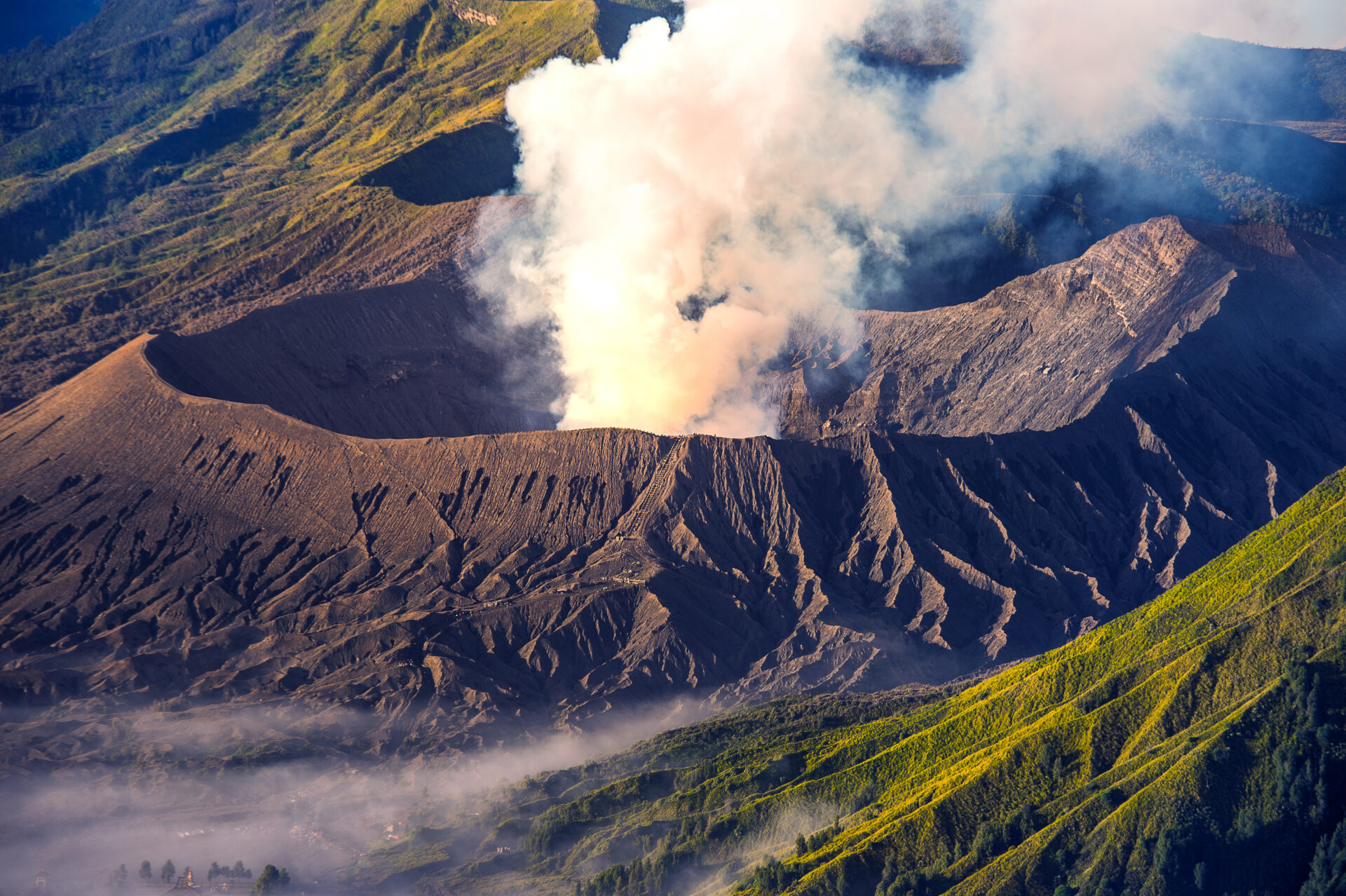Read DISCLAIMER
Living near volcanic regions is an environment that has unique challenges and health implications. Volcanic areas often offer rich soil and sceneries but expose people living there to many environmental hazards, which could easily affect both the physical and mental well-being of people living in such environments in the long term. Volcanic eruptions are the most direct danger as they eject ash, gases, and particulates into the atmosphere; the inhalation of volcanic ash irritates the respiratory system, and its effects may include coughing, bronchitis, and exacerbation of pre-existing conditions such as asthma or chronic obstructive pulmonary disease (COPD), and fine particles in the ash penetrate deep into the lungs, causing possible long-term damage with long-term exposure. Other than the ash, the gases emitted by volcanic eruptions include sulfur dioxide, carbon dioxide, and hydrogen sulfide, which are harmful to health; sulfur dioxide can combine with water vapor in the air to form sulfuric acid, contributing to acid rain and directly irritating the eyes, skin, and mucous membranes, while carbon dioxide, odorless and heavier than air, may accumulate in low-lying areas and create deadly oxygen-deficient environments without warning.
Chronic exposure to volcanic gases has been shown to have more insidious effects, including contributing to cardiovascular problems and changing lung function, and even low-level emissions from continuously active volcanoes pose cumulative health impacts to people living nearby. For those communities residing in regions with volcanic activities, the sources of water contamination, the presence of heavy metals in drinking water like arsenic, lead, and mercury that have been associated with health risks and have leached into the ground from the volcanic deposits, also pose further threats to human health, which are associated with neurodegenerative diseases, impaired development of children, and even cancer risks at long term. In addition, the fine dust from volcanic ash that settles on crops and water sources can introduce harmful elements into the food chain, thus making the health risks for communities dependent on local agriculture and fishing even worse.
Another crucial but generally overlooked aspect of living near volcanic regions is mental health effects, as the ever-present threat of eruptions, orders to evacuate, loss of homes or livelihoods can elevate stress, anxiety, and even PTSD. Major eruptions in these communities make their restoration and recovery protracted and emotionally straining; hence, recovery would be particularly trying when associated with displacement or the loss of a loved one and financial crisis in the case of damaged infrastructural and agricultural setups. The unpredictability of volcanic activities may further exacerbate these challenges, as the residents live in anticipation of when the next eruption might occur, therefore with continued vulnerability and fear, that is bound to affect mental health over some time.
Indirect health risks may also emerge in volcanic regions through their influence on environment and climate. For instance, super eruptions may disrupt weather patterns and reduce sunlight by injecting large amounts of particles into the stratosphere, causing “volcanic winters” that lead to crop failures and food shortages, indirectly affecting the health of populations nearby. In tropical regions, the increased humidity and altered microclimates around volcanic zones create breeding grounds for disease-carrying insects such as mosquitoes, which may lead to an increased prevalence of vector-borne diseases like malaria and dengue fever. Similarly, the fertile volcanic soil that supports dense vegetation and agriculture can also harbor soil-borne diseases, exposing farmers and residents to fungal infections and other health risks during activities like tilling or construction.
Long-term habitation in volcanic areas often necessitates adaptation strategies, such as installing air filtration systems to mitigate ash exposure, regularly testing water supplies for contaminants, and adopting emergency preparedness plans to minimize the impact of eruptions. Governments and local authorities have to play a vital role in monitoring volcanic activity and giving timely warnings. However, even with the best predictive technologies, the nature of volcanic disasters is sudden; hence, personal and community preparedness is vital. On a broader scale, raising awareness about the health implications of living near volcanic regions can drive investment in public health infrastructure, ensuring that affected communities have access to medical care, clean water, and mental health resources to cope with the unique challenges of life in these geologically dynamic areas.
In most instances, the threats of health risks involved in living near volcanoes are offset by the advantages these areas have to offer, including rich geothermal sources of energy, fertile ground for farming, and the potential for eco-tourism, which can increase local economies and thus better the quality of life. Hence, flourishing in these circumstances requires an adequate understanding and efficient management of those risks through proper scientific research combined with public awareness and sustainable ways that reduce damage to human life and the surroundings caused by volcanoes. Be it tackling the direct dangers of eruptions or addressing long-term exposure effects from chronic pollutants from the volcanoes, staying near such natural wonders calls for resilience, adaptability, and a proactive attitude toward health and safety.

Thanks for sharing. I read many of your blog posts, cool, your blog is very good.
Thank you for your sharing. I am worried that I lack creative ideas. It is your article that makes me full of hope. Thank you. But, I have a question, can you help me?
Can you be more specific about the content of your article? After reading it, I still have some doubts. Hope you can help me.
Your point of view caught my eye and was very interesting. Thanks. I have a question for you.